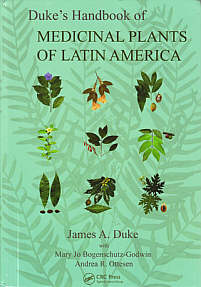The South American "Traditional" Used for Centuries
Inflammation  Congestion  Arthritis
Colds  Flu  Headaches
 Stress
Dizziness  Anxiety  Cramps
The aromatic "Capnip for People"
Flower Oil of
Palo Santo

Essential Oil of
the Flower of
Palo Santo
( Bursera graveolens)
30 ml. (1 fl. oz.)
Code 5197B -- Price: $19.95
Order Now
 Email
Email
 Summarized Description: Summarized Description:
Palo Santo ("holy stick") is the name given to a medicinal tree commonly
found in Peru and Ecuador. (Dr. James Duke refers to it as Caraña, the common
name used in certain parts of Central America.) Although the distribution of the tree
goes as far north as Mexico, it appears to be more ingrained in the culture in this
part of South America. In Ecuador, the wood of the tree can been
found burning, as a kind of incense, in markets throughout the country. Merchants use
the burning wood to attract customers. The smell is
alluring and cannot be compared to any other natural medicinal I know -- not even
frankincense and myrrh, to which it belongs in the same family,
Burseraceae.
 As one herbalist who's a personal friend puts it:
"Palo Santo is like 'catnip' for people. It is no wonder people ascribe so many
medicinal qualities to it, including the expulsion of evil spirits. I know very
educated people who keep it around for good luck."
Shelf-Life
 At least five years if kept in a cool, dry place.
Further protection from oxidation can be obtained by refrigerating.

Medicinal Activities
 Further information for practitioners: Further information for practitioners:
World-famous botanist Dr. James Duke attributes the following activities
to this plant (p. 132; see hardcopy cover at right),
drawn from the extant literature. (See his graduation for "level of
efficacy" on our amazon traditionals page;
followed by Duke's bibliographic abbreviations (in capital letters),
which we identify
on a separate page.) (1)
- Abortifacient (f; MPG);
- Analgesic (f; MPG; RAR);
- Antiinflammatory (f; MPG);
- Antisarcomic (1; X15684524);
- Antispasmodic (f; JTR);
- Cytotoxic (1; X15684524);
- Deodorant (f; BEJ);
- Depurative (f; MPG);
- Diaphoretic (f; MPG);
- Expectorant (f; MPG);
- Sedative (f; DLZ);
- Sudorific (f; RAR).
Indications
 Further information for practitioners: Further information for practitioners:
Duke provides the following indications for this plant:
- Colic (f; MPG);
- Cramps (f; JTR);
- Ear (f; BEJ);
- Fibrosarcoma (1; X15684524);
- Gastrosis (f; JTR);
- Headache (f; SOU);
- Inflammation (f; MPG);
- Insomnia (f; DLZ);
- Otosis (f; BEJ);
- Pain (f; MPG; RAR);
- Rheumanism (f; JTR; MPG; SOU);
- Sarcoma (1; X15684524);
- Spasms (f; JTR);
- Sties (f; JFM);
- Stomachache (f; MPG);
- Swelling (f; MPG);
- Wounds (f; MPG).
Footnotes
- Duke, James A., Medicinal Plants of Latin America, CRC Press, 2009, p. 132-133. ISBN: 978-1-4200-4316-7.
- Ibid.
|
 To U.S. Users: To U.S. Users: This product
have not been evaluated by the U.S. Food & Drug Administration.
It is not intended to diagnose, treat, cure, or prevent any disease.
|
Common Uses For:
Palo Santo Fruit Oil
- Congestion: Apply a few drops of Palo Santo fruit oil to a small pot of boiling water. The resulting
evaporating oil is used to clear the sinuses and decongest the upper respiratory system.
- Colds, asthma, flu, allergies: Boil 5 cups of pure water in a medium pot.
Then add 10 drops of Palo Santo oil. Breath in the vapors for several minutes.
Repeat this three times a day until symptoms are relieved.
- Migraines and Headaches: Apply a few drops (3 or 4) of the oil to the area of discomfort.
The forehead and temples are common areas of application.
This can be applied as many times as necessary.
- Dizziness, panic, stress, job anxiety. Put 5 drops of oil in your hand.
Lightly rub on the chest and allow the aromas to be absorbed for a few seconds.
Better rest tends to produce better results.
- Arthritis and osteoarthritis. Put a few drops (3 or 4) directly at the point of pain.
Protect the affected part with a red blanket. Red color increases body energy flow.
Do this three times a day.
- Muscle, bone and joint pain. Apply a few drops (8 or 9) of the oil directly to the point of pain.
Massage lightly until the oil is absorbed. Do this three times a day.
- Cramps, contractions, areas of inflammation. Apply 6 to 8 drops of the oil, several times a day, with gentle massage
at the point of the condition. Again, rest tends to produce better results.
Other Ethnobotanical Use
 Duke provides a "food pharmacy
potential" score for this plant of, "FNFF=?" ("Very questionable survival food."). (2)
We would never recommend it for anything but its traditional external uses.
We do not recommend this product be taken internally. Duke provides a "food pharmacy
potential" score for this plant of, "FNFF=?" ("Very questionable survival food."). (2)
We would never recommend it for anything but its traditional external uses.
We do not recommend this product be taken internally.
- Costa Ricans apply the oil resin from the trunk to newborn navels to treat sties. (JFM).
- Cubans use alcoholic macerate as antirheumatic and sudorific. (JTR).
- Cubans use buds as abortifacient and in vaginal douches. (MPG).
- Cubans use the leaves for stomach cramps. (JTR).
- Ecuadorians use stem a/o latex for anemia, body odor, and ear ailments. (BEJ).
- Guatemalans use leaves and stems for stomachache. (MPG).
- Nicaraguans use for colic, inflammation, pain, rheumatism, swelling, and wounds. (MPG).
- Peruvians use bark poultice as analgesic, depurative, diaphoretic, and expectorant, and for stomachache. (JFM; MPG; SOU).
|



